21 February 2025
It seems strange to think, considering the marque’s history and reputation, but McLaren’s Le Mans 24 Hours win 35 years ago was never supposed to happen. However, a combination of factors enabled racing versions of the famous F1 hypercar to go on to take victory in one of the world’s most famous races, and helped the Woking-based firm complete the manufacturer’s Triple Crown.
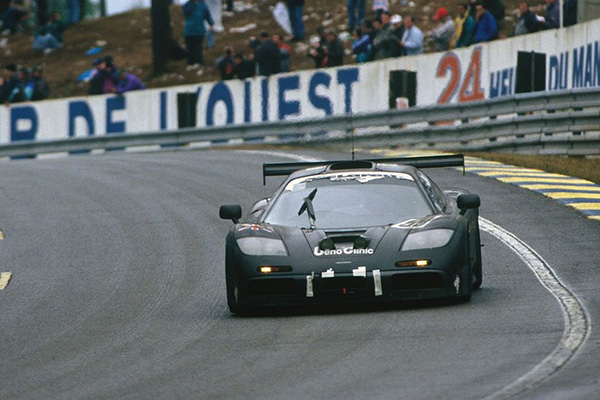
Comprising victories at Le Mans with endurance cars, the Indianapolis 500, and Monaco with Formula 1, the Triple Crown is one of the rarest accolades in motorsport. And yet, when the McLaren F1 GTR took to the Le Mans grid in 1995, few would have expected it to win, becoming both the last road-based car to win at Le Mans, and also one of only three times a manufacturer has taken victory at the endurance race at the first time of asking.
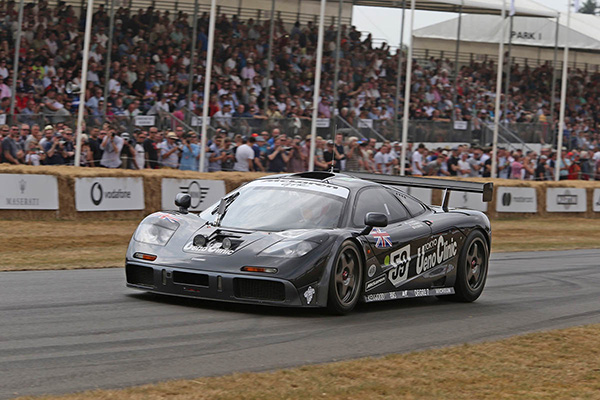
It’s worth remembering that there were four classes of car racing at the 1995 24h Le Mans race (there often are) and the McLaren F1 was in what was supposed to be the third fastest class. With WSC (World Sportscar) the equivalent of today’s Le Mans Hypercar (LMH) prototypes, and LMP2 models were both faster than the GT1 class tin which the F1 GTR sat.
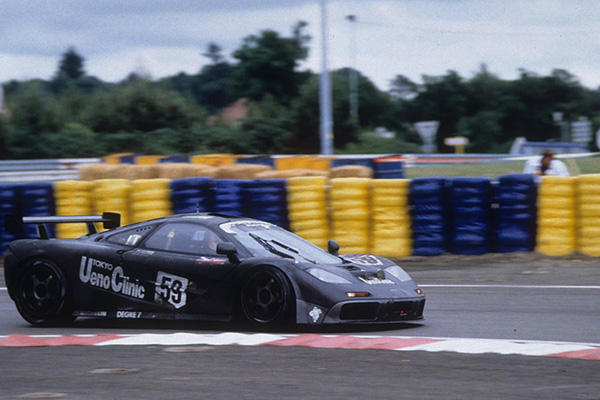
Courtesy ACO Le Mans
Preparation was not without controversy too. The GTR was only built due to demands from customer racers competing in the BPR GT Series - the precursor to the FIA GT Championship. Either McLaren build a racing version of the F1, or they will. And of course McLaren didn’t want to cede control of developing a racing car, so develop one they did.
During testing the car ran better than expected, proving both fast and reliable; which caused some external interest. A Japanese clinic, Ueno, wanted to back a car at Le Mans, but none of the teams were able to take the company on as their title sponsor. McLaren’s only option to gain this financial support was to run its own car – in fact a development chassis – which then put the manufacturer up against its own customers - without said customers expecting this at the outset. Things got worse when the team McLaren had chosen to run its entry – Lanzante Motorsport, racing under the name Kokusai Kaihatsu Racing - had a clash with a race in Britain the same weekend, leaving the tea short-staffed. So McLaren was left having to help replenish numbers with its test team.
McLaren had by that time helped source key personnel too, with McLaren supremo Ron Dennis speaking, at the company’s competitions manager at the time, Jeff Hazell’s request, to Yannick Dalmas. The Frenchman was wanted as car captain, recognised for both his experience and pace - he’d already won twice before with Peugeot in 1992 and Porsche Joest in 1994 by that point.
The sponsor provided Masanori Sekiya, a Japanese driver rated as solid and reliable, while Dennis also managed to secure JJ Lehto - the Finn who then had a reputation for being very quick, but not exactly a safe pair of hands. Combined, the trio made quite a team. In fact, Hazel later described the set-up: “As it turned out, it was a perfect driving crew.”
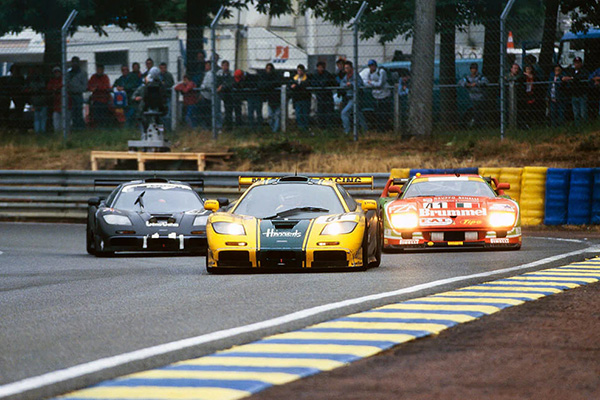
Something that is often thrown at the 1995 Le Mans race is that its field was rather thin, but it’s a bit of a cop out to explain away McLaren’s win in that fashion. It’s true that the endurance racing landscape was changing during 1994 and 1995, resulting in a lack of household names in the top categories, but there were still some very fast cars and drivers competing 35 years ago.
For instance, the Welter Racing WRLM95 was as quick as it was pretty. In qualifying, it locked out the front row, and even then, the victorious McLaren F1 was only the fourth fastest car in its class, placing 9th on the grid after qualifying – three Ferraris qualified faster from its class. And the GT1 class was packed with big names. Joining McLaren and Ferrari were Honda, Nissan, Porsche, and Jaguar, as well as Marcos, Callaway, Lister, and Venturi. And these GT1 cars had good fuel consumption, making up a little for outright pace.
The run up to the race was not without incident for the victorious McLaren; the gearbox and engine both had to be repaired, with the selector shaft from third to fourth bent and causing problems, as well as BMW’s glorious V12 having been revved to around 9,000rpm.
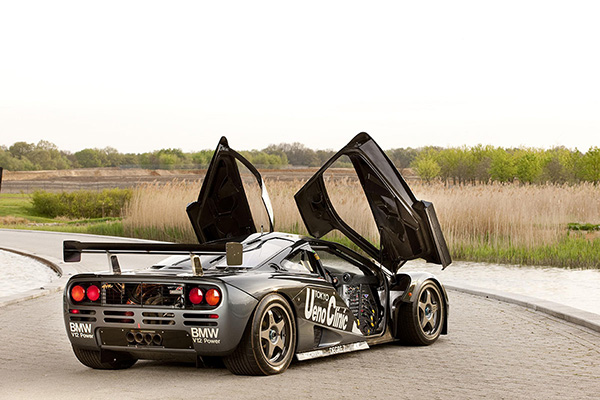
BMW said it wasn’t necessary to change it on inspection, but advised that it might be best… with a 24 hour race coming up after all. McLaren had also strengthened some suspension components after Lehto’s driving had been described as somewhat vigorous by the team. And then the warning light for the fuel pump turned on when at the start-line. It was later revealed that the F1 GTR ran the entire race on the reserve fuel pump.
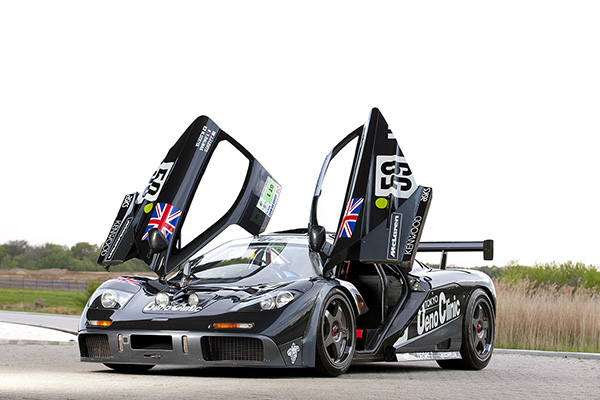
With the prototypes untouchable in terms of outright speed, the rest of the field had to depend on reliability – or lack thereof for other teams – to really make inroads to outright victory. And with much of the early part of the race hit by rain, as well as most teams coming into problems of their own, the race was almost in chaos with in a few hours. McLaren’s gearbox issues had returned, this time with water and debris making their way into the transmission via the selector cables. Plenty of WD40 and a patch job didn’t exactly solve the issue, but sorted it for the race.
The rain otherwise played into McLaren’s hands. It started around an hour into the race, and featured pretty much throughout. It was during the night with Lehto behind the wheel that really saw the F1 GTR shine; the Flying Finn maintained a pace that nobody else could keep up with. At times, he was ten seconds a lap faster than anyone else on track.
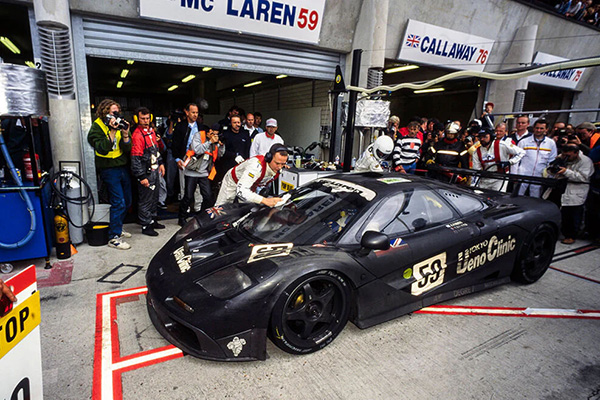
Further issues were in store however, with one pit-stop snafu saw Sekiya come into the pits, his wheels removed for fresh tyres, but none put back on before the car was dropped off its jacks again. Fury ensued in the garage, which gradually simmered down, but further showcased the scrambled and relatively inexperienced nature of the team’s racing efforts.
McLarens run by another team led for a while, with the famous Harrods-liveried machine coming closest to victory for the privateers, but a clutch-slip issue dropped the car down to third, with Mario Andretti – chasing the Triple Crown – charging back in his Courage following early issues.
The McLaren held on though, taking an astonishing victory that helped rescue the company’s racing efforts, brought in fresh investment from BMW, and gave the firm the ability to expand its road car special editions, as well as long-tail racing versions. And it all came about from not only an unexpected and remarkable win, but McLaren F1 GTRs also finished 3rd, 4th, and 5th… all on the marque’s Le Mans debut.
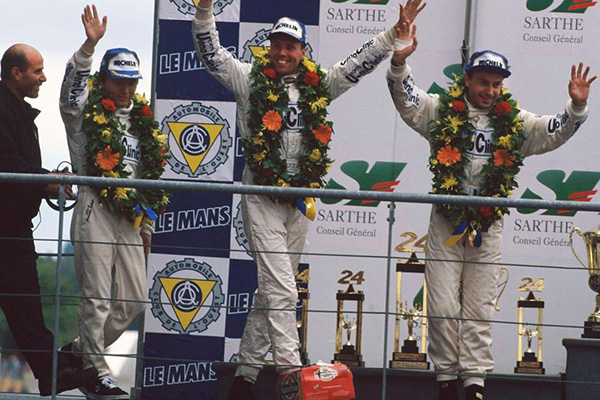

COMMENT